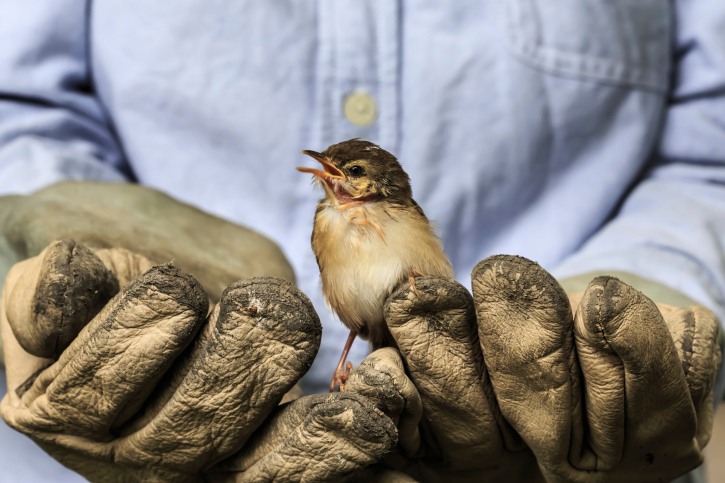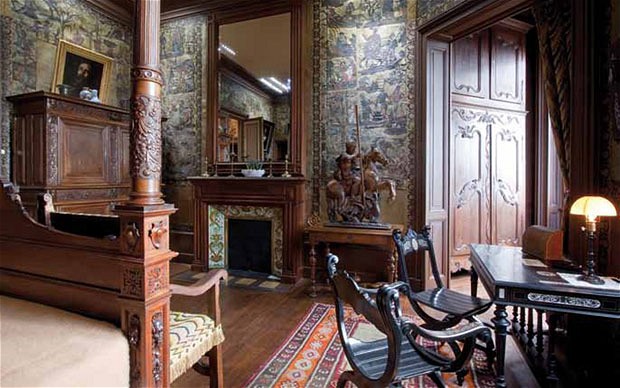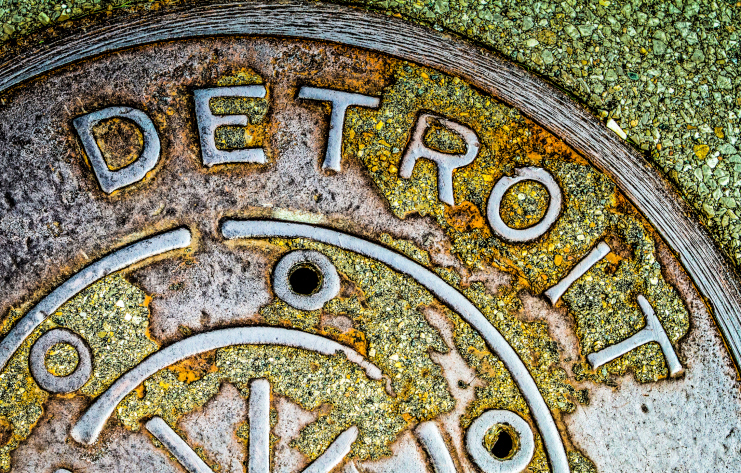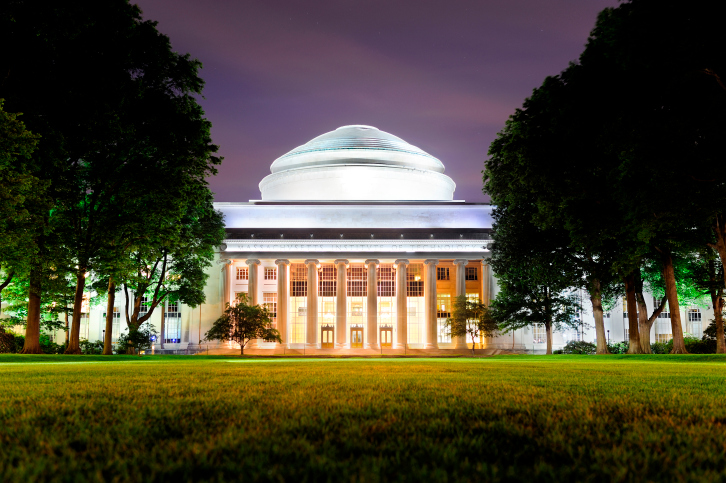 Weird Stuff
Weird Stuff  Weird Stuff
Weird Stuff  Food
Food 10 Everyday Foods You Didn’t Know Were Invented by the U.S. Military
 History
History 10 Odd Things Colonial Americans Kept at Home
 Weird Stuff
Weird Stuff 10 Superstitious Beliefs That Once Consumed Entire Cultures
 History
History 10 Bizarre Friendly Fire Incidents in Military History
 Technology
Technology 10 Modern Technologies That Accidentally Imitate Ancient Magic
 Mysteries
Mysteries 10 Mysteries of the Human Genome
 Weird Stuff
Weird Stuff 10 Things So Rare They’ve Only Been Found Once
 History
History 10 Legends Whose Last Moments Undid Their Glory
 Health
Health 10 Futuristic Ideas to Treat Common Medical Problems
 Weird Stuff
Weird Stuff 10 Fascinating Things You Might Not Know About Spiders
 Food
Food 10 Everyday Foods You Didn’t Know Were Invented by the U.S. Military
 History
History 10 Odd Things Colonial Americans Kept at Home
Who's Behind Listverse?

Jamie Frater
Head Editor
Jamie founded Listverse due to an insatiable desire to share fascinating, obscure, and bizarre facts. He has been a guest speaker on numerous national radio and television stations and is a five time published author.
More About Us Weird Stuff
Weird Stuff 10 Superstitious Beliefs That Once Consumed Entire Cultures
 History
History 10 Bizarre Friendly Fire Incidents in Military History
 Technology
Technology 10 Modern Technologies That Accidentally Imitate Ancient Magic
 Mysteries
Mysteries 10 Mysteries of the Human Genome
 Weird Stuff
Weird Stuff 10 Things So Rare They’ve Only Been Found Once
 History
History 10 Legends Whose Last Moments Undid Their Glory
 Health
Health 10 Futuristic Ideas to Treat Common Medical Problems
10 Amazingly Ambitious Time Capsules
The opening of America’s oldest time capsule has given us a surprisingly intimate look into a turning point in the country’s history. Sealed into the Massachusetts State House in Boston by Samuel Adams and Paul Revere, the capsule (which had actually been opened before, in 1855) contained artifacts like coins, pages from a newspaper, and a medal honoring George Washington. The opening of the time capsule renewed interest in the old idea of preserving a snapshot of history for future generations.
10Bellevue Hospital Medical College

In 2011, New York University were in the process of demolishing the Bellevue Hospital Medical College building when they discovered a long-forgotten time capsule. It had been placed in the cornerstone of the building in 1897, and when a bacteriologist from NYU opened it, he found a vial of bacterial spores that had been prepared for him 114 years earlier.
The capsule had been put together by Bellevue Hospital Medical College bacteriologist Edward Dunham, who included the vial alongside more traditional time capsule contents like student medical records. The sample had been taken from a 23-year-old patient at the hospital, and Dunham had left it with a note hoping that whoever found the capsule would be able to gain some pretty valuable information about just how long bacteria can live.
The potential implications of the sample are staggering. Bacteria has changed considerably since the widespread use of antibiotics began in the 1940s, and the sample gives researchers a look at what human bacteria was like before we knew how to fight it. They’ll be able to tell how bacteria has changed over the decades, and see just how well the ability to go dormant allows bacteria to survive over the years.
9The National Zoo

When the elephant house at the National Zoo in Washington, D.C. was being remodeled, workers stumbled across a time capsule left behind by a legendary figure in the zoo’s history. William Mann, once the zoo’s director, began his long career at age nine, when he ran away to join the circus with the goal of teaching them how to better care for their animals. During his time at the National Zoo, Mann wrote countless pieces on improving conditions for the animals, oversaw the creation of the zoo’s first full-time veterinary department, and even trained one of the zoo’s birds to ask how their government funding was coming along.
Mann’s time capsule contained programs from the Ringling Brothers And Barnum & Bailey Circus, a copy of the Washington Post, and documents pertaining to the zoo’s resident elephants at the time.
Taking inspiration from Mann’s time capsule, the elephant house’s current caretakers will be putting together a capsule of their own to leave inside the newly remodeled building. They’re including information on their own elephants and the endangered status of elephants in the wild—and just like Mann did, they’ll be including a copy of the Washington Post.
8The Future Library

This time capsule is pretty unique in that it’s not even going to be properly assembled for quite some time. The Future Library project is a century-long installation that will involve 100 writers, one a year, creating an original piece to be installed into the Future Library, where they will remain unread until 2114. When that day comes, a special anthology will be printed on paper harvested from a forest of 1,000 trees just planted in Norway. Until the unveiling, the manuscripts will be kept by the New Deichmanske Public Library in Oslo.
Margaret Atwood was the first author chosen and will present her unread manuscript to the library in 2015. The entire project is the brainchild of a Scottish artist named Katie Paterson, who will work with a literary trust to select the authors for as long as she is able. The only guidelines for the works is that they should somehow be themed around time and the imagination—beyond that, it’s completely up to each writer.
In the grand scheme of things, 100 years isn’t that far away. But according to Paterson, the idea is that each author isn’t writing for a faceless audience in an unfathomably distant future, but for one that is just temptingly out of reach.
7Lunar Mission One

It’s one thing to leave a time capsule in the cornerstone of a building or sealed in a vault somewhere, but there’s something undeniably epic about the idea of leaving one on the Moon.
Lunar Mission One, scheduled to leave in 2024, has a fairly traditional goal—it’s going to land on the southern pole of the Moon and collect samples of the surface layer. But it’s also going to leave behind a time capsule. Part of the capsule will be filled with information about Earth and its history, but it will also include any personal information the project’s backers want preserved on the Moon. Suggested items include photos, family trees, and even strands of hair (for the DNA).
According to the project’s creators, the capsule isn’t just an opportunity to get people interested in space, but is also something of an emotional journey. While our lives might seem fleeting or insignificant, the idea of being one of a handful of people immortalized in a time capsule on the Moon is infinitely cool.
6The Apollo 11 Recordings
There are few moments in modern history that capture the imagination like the Apollo 11 Moon landing. To preserve it for posterity, everything about the landing was recorded, from conversations between the astronauts to communications between the shuttle and NASA’s ground crew. On the 40th anniversary of Neil Armstrong’s first steps on the lunar surface, in a very cool tribute to everyone who worked on the mission, NASA set up an “audio time capsule” containing all of the recordings.
Beginning in the early morning of July 16, 2009, NASA live-streamed the audio feed of the mission in real time, exactly as it had been broadcast 40 years before. The streaming feed lasted for eight days, beginning a few hours before the shuttle launched and not concluding until after the crew had landed.
Interestingly, while the Moon landing was actually happening NASA couldn’t hear the conversations going on in the Lunar Module—but they were all recorded and recovered after the mission. Transcripts have been available for quite a while, but it’s only fairly recently that the files have been digitized and posted online—they were originally made with on-board voice recorders and stored fairly haphazardly on tapes.
5The Environmental Specimen Banks

The International Environmental Specimen Bank Group is an international coalition to help preserve environmental and biological data for future research. Sweden, Japan, Norway, Italy, the United States, and Canada are among the nations who have already established protocols for collecting and preserving samples for future use, with other countries in the process of developing similar plans.
The variety of samples in this international collection are immense. Germany’s environmental specimen bank includes such diverse samples as blood plasma and human hair, zebra and blue mussels, roe deer organs, pigeon eggs, and soil samples. These environmental time capsules have a very practical purpose, since being able to monitor changes in the samples over the years allows us to gain a clear picture of what human activity is doing to the environment—and how the environment is changing us. The specimen banks also allow researchers to monitor how effective green initiatives are, chart the long-term impacts of chemical use, and determine whether or not legislation is having the desired environmental effect.
The process for obtaining, documenting, and storing samples is an extensive one, even down to protocols dictating that 15 percent of the samples taken in any given year must be kept in a secondary location.
4The Mantin Mansion

Louis Mantin was born in Moulins, France in 1851. A civil servant, he came into a rather large amount of money from his father, which he used to collect a treasure trove of exquisite furniture and contemporary amenities like early electrical appliances. He also had an eye for the historical, acquiring Masonic memorabilia, Neolithic tools and oil lamps, and even a collection of medieval locks and keys.
Mantin never married and never had any children, so in his will he stipulated that his home should be preserved for 100 years and then turned into a museum—and that’s exactly what happened. The citizens of Moulins closed up the house on his death and only reopened it at the proper time, encouraged by one of the last remaining members of Mantin’s family.
Well, it actually took 105 years, since Mantin died in 1905 and his museum opened in 2010. The house needed a little renovation to get it back into pristine condition, but once the work was finished, the result was an amazing glimpse of everyday life as it was a century ago. While Martin’s collections of Egyptian artifacts and imported porcelain and tapestries were stunning, the rooms that had once been designed for his everyday use are now just as valuable.
3The Detroit Time Capsule

In 1901, Detroit mayor William Maybury oversaw the creation of a time capsule scheduled to remain sealed for 100 years. In 2001, the mayor of 21st-century Detroit unveiled the letters, revealing an odd mix of incredible optimism, poignant memories, and not a little bit of sadness.
Today, we know that Detroit has seen better days, and that helped to make the contents of the capsule so moving. Maybury asked a number of Detroit’s leading figures to compile some statistics about the city as it was at the dawn of the 20th century—and to make some predictions about the future.
James Scripps, president of the Evening News Association, likened Detroit to a sort of American Constantinople, suggesting that its advantageous location and wealth of natural resources were going to make it one of the best and most desirable places in the country to live. He predicted there would be no city more healthy than Detroit in 2001, and foresaw a bustling seaport, a hub of industry, a center for entertainment, and a massive population of more than two million.
Orrin R. Baldwin, president of the Merchants and Manufacturers Exchange and the American Harrow Company, predicted that Detroit would be a powerhouse of manufacturing, with more than 5,000 plants comfortably supporting 500,000 employees and 2.5 million people in the wider city.
Maybury himself made some more general predictions, including faster travel and advances in communications allowing people to easily communicate with other countries.
2MIT’s Various Attempts At Time Capsules

The Massachusetts Institute of Technology is one of America’s elite research institutes, so it’s not surprising that they’ve made some pretty ambitious attempts at creating time capsules. For example, the school and its students are in the process of crowdsourcing the funding to send a time capsule to Mars. The propulsion system will be designed at the school and is based on a system currently being used on the International Space Station. The plan is to create an engine that will be capable of sending millions of messages, all packed into a quartz storage unit, to Mars in a matter of months. Thus, humans will have something waiting for us once we finally get around to colonizing Mars.
Hopefully, the project will be a little more successful than the time capsules MIT have tried to organize in the past. One capsule on campus was supposed to be opened in 1989, 30 years after it was installed. It’s still there today, mostly because the university built an 18-ton particle accelerator on top of it. The accelerator is no longer in use, but no one’s bothered to move it to see what’s inside the time capsule.
That might be because they’re familiar with the sense of humor of Harold Edgerton, MIT electrical engineering professor and time capsule enthusiast. He created and sealed a capsule of his own in 1957, taking all the proper precautions to make sure the contents weren’t damaged in the 1,000 years the capsule is to remain sealed.
What could it possibly contain that would show a true picture of life in 1957 to a human race altered by centuries of change?
An empty bottle, a coffee mug, and 91 cents.
1The Rosetta Project
Named for the Rosetta Stone, the Rosetta Project is part of The Long Now Foundation, an organization formed in 1996 to encourage people to think ahead, not just over the course of our own lifetime, but over the next 10,000 years.
The Rosetta Project was one of their first endeavors, ensuring that a huge variety of languages will be preserved—and that texts written in any of those languages will understandable if they should be discovered thousands of years from now.
The first part of the project was to assemble a set of texts that are essentially identical to each other, but translated into 1,000 different languages. They’ve already passed that goal with a collection of 100,000 pages of text in 2,500 different languages. It’s a hugely important undertaking, especially considering that linguists have predicted that up to 90 percent of the world’s languages could disappear over the next 100 years.
The second part of the project is a long-term archive dubbed the Rosetta Disk. The archive, which currently only exists as a prototype version, is a 7.5-centimeter (3 in) metal disk containing a wealth of information, from complete works of literature to blueprints of some of our most groundbreaking technologies. It’s not read in the same way as digital media—instead, the text is microscopically etched into the surface of the disk. The only thing future generations will need to be able to read the 14,000 pages of information is a really, really good microscope.








